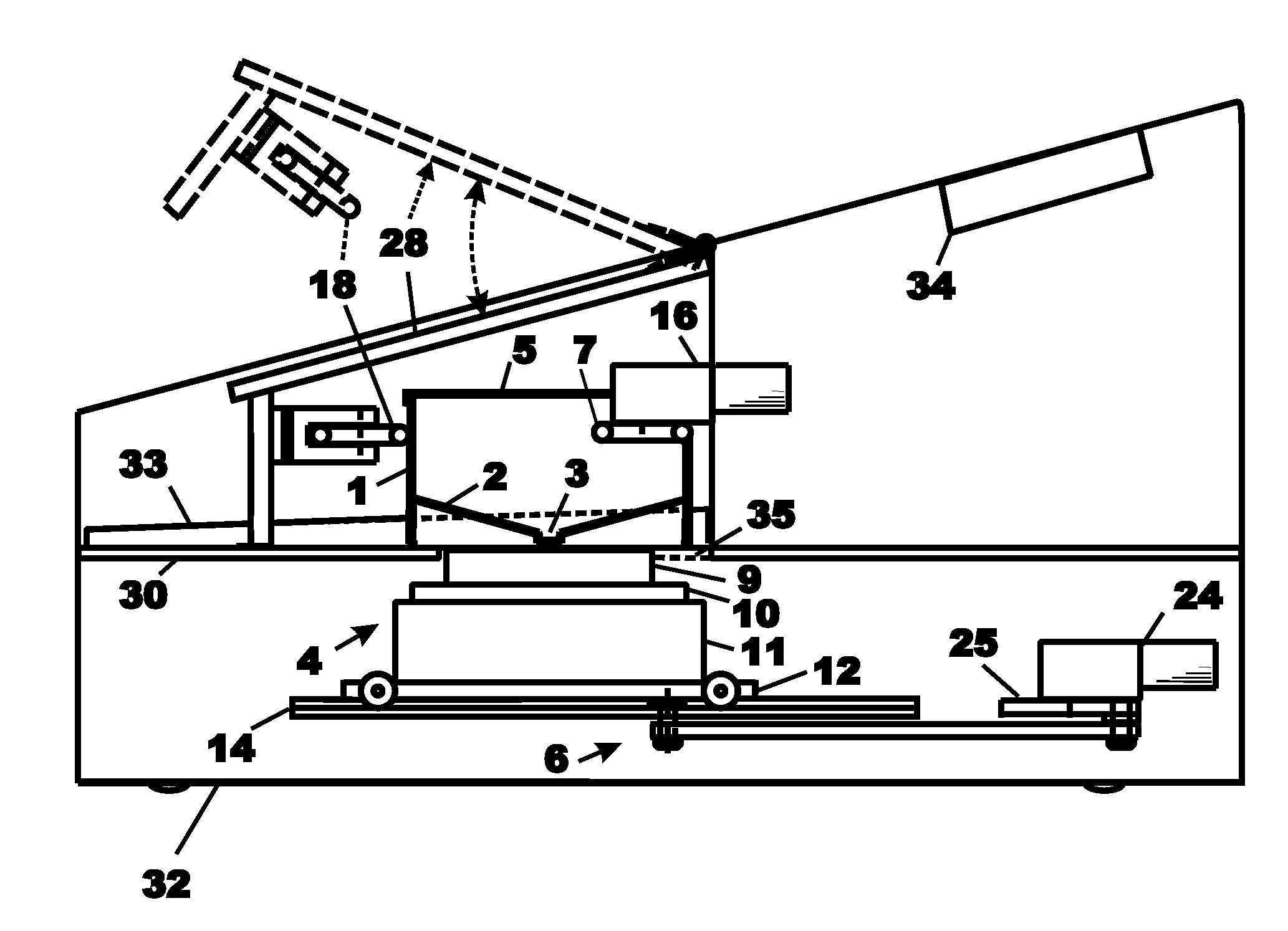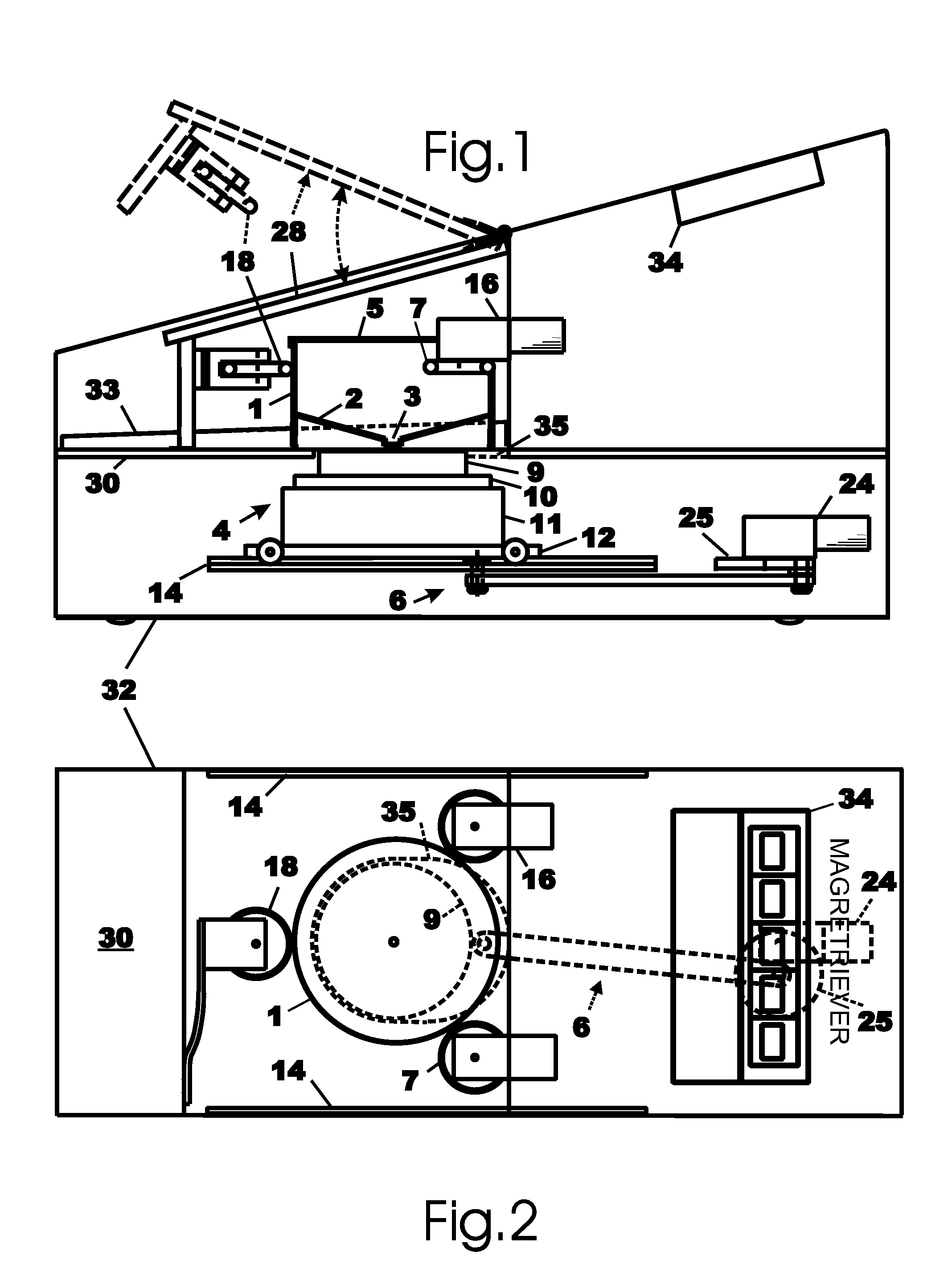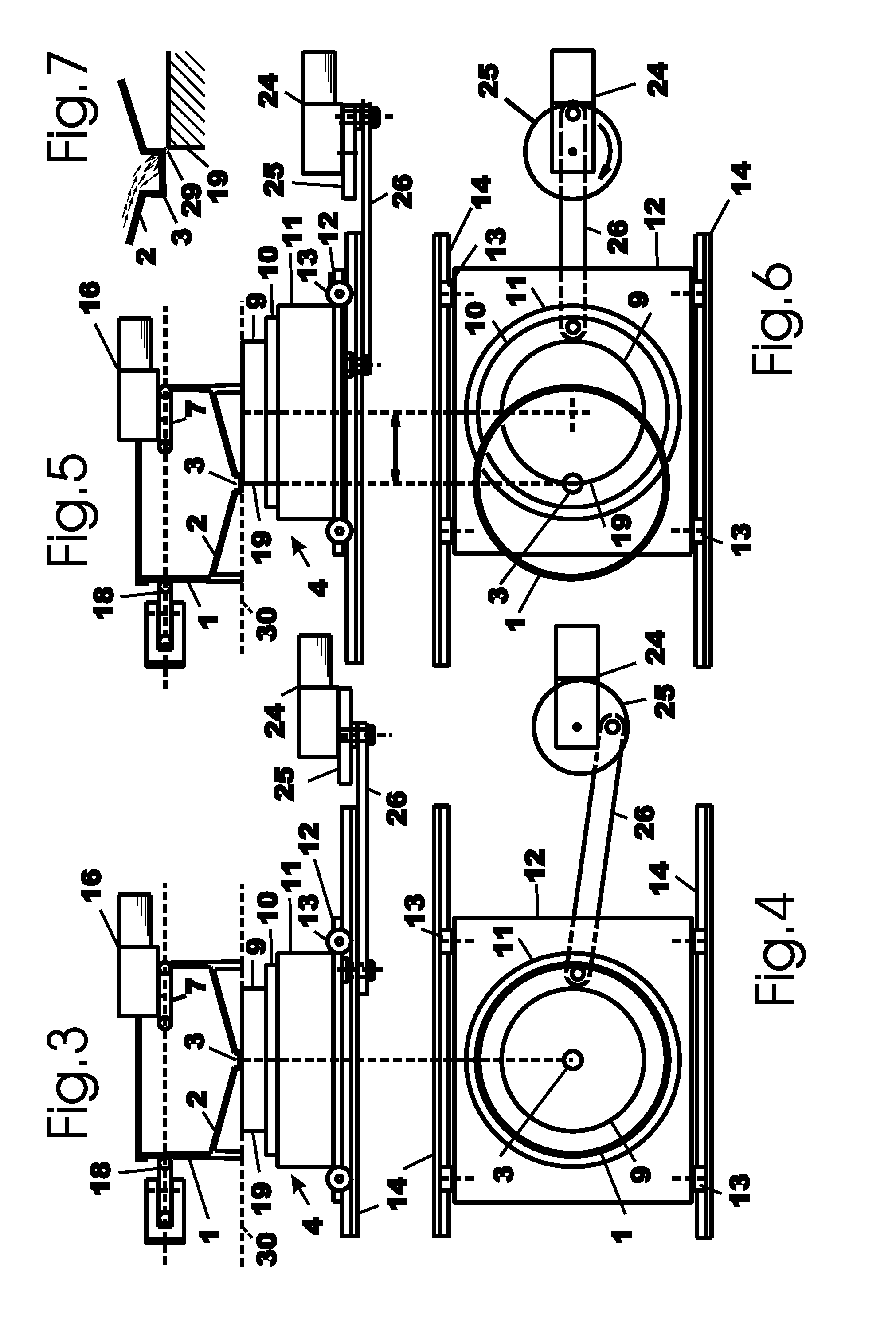Apparatus To Extract Magnetic Particles From Suspensions
- Summary
- Abstract
- Description
- Claims
- Application Information
AI Technical Summary
Benefits of technology
Problems solved by technology
Method used
Image
Examples
Embodiment Construction
[0026]With reference to FIGS. 1 and 2, the apparatus of the present invention comprises a vessel 1 for containing sample fluid having an inner base surface 2 that slopes downwards towards a well 3, in the form of a cavity in the base 2, for collecting magnetic particles. Positioned under and in proximity with the vessel 1 is a magnet assembly 4 for attracting magnetic particles to the bottom surface of the vessel towards the well. As detailed below, the magnet assembly is arranged to provide a relatively larger magnetic flux density at a peripheral region thereof.
[0027]The magnet assembly 4 is shown laterally movable relative to the vessel 1 by magnet traversing / positioning means 6 adapted to move the magnet assembly 4 relative to the vessel 1 between a first position whereby the magnet assembly 4 is generally centered under the vessel 1, and a second position whereby the peripheral portion of the magnet is positioned under the well 3 of the vessel 1, as shown in FIG. 5 and detailed...
PUM
| Property | Measurement | Unit |
|---|---|---|
| Diameter | aaaaa | aaaaa |
| Magnetism | aaaaa | aaaaa |
| Magnetic permeability | aaaaa | aaaaa |
Abstract
Description
Claims
Application Information
 Login to View More
Login to View More - R&D
- Intellectual Property
- Life Sciences
- Materials
- Tech Scout
- Unparalleled Data Quality
- Higher Quality Content
- 60% Fewer Hallucinations
Browse by: Latest US Patents, China's latest patents, Technical Efficacy Thesaurus, Application Domain, Technology Topic, Popular Technical Reports.
© 2025 PatSnap. All rights reserved.Legal|Privacy policy|Modern Slavery Act Transparency Statement|Sitemap|About US| Contact US: help@patsnap.com



